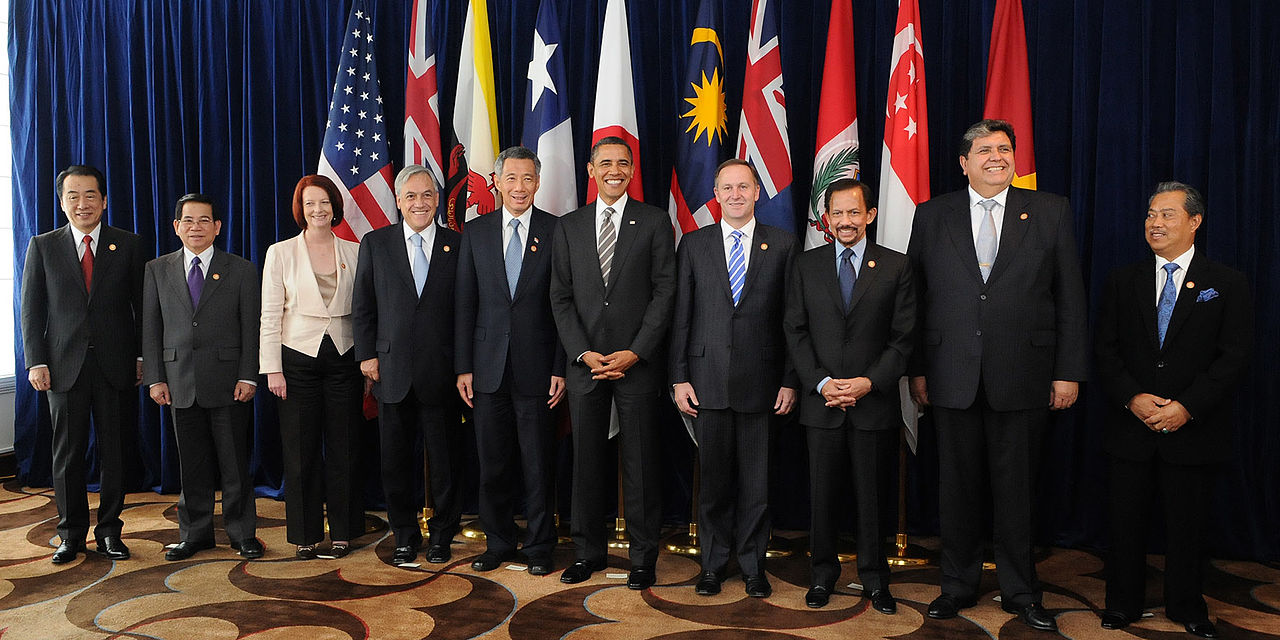In recent years, the major U.S. trade initiative has been the proposed Trans-Pacific Partnership deal, an agreement that seeks to promote greater trade liberalization within the Pacific Rim region. Since its announcement, TPP has been under constant attack by various economists and activist groups. However, the advantages of the deal are clear. The implementation of TPP would open up new markets to American goods, establish common standards of regulation, and advance U.S. geopolitical goals. Despite the controversy surrounding it, after considering the substantial benefits of this agreement, it is clear that TPP favours American interests.
TPP’s most obvious impact is in its significant reduction of trade barriers. Through the elimination of tariffs and subsidies in numerous Pacific Rim countries, U.S. corporations will gain an opening to sell their goods in Asian markets and acquire the capability to compete on a level playing field against domestic companies in the region. The opening of these nations in the agricultural and services sectors in particular will provide America with a substantial economic boost, since the U.S. tends to run large surpluses in these areas. Due to these cuts in trade barriers, TPP is projected by the Peterson Institute to add $78 billion annually in income to the American economy. The removal of certain U.S. tariffs will also be beneficial to American consumers, as the removal of these duties will allow foreign companies to lower their prices on goods in the American market, enabling shoppers to purchase imports at cheaper rates.
TPP further levels the playing field between U.S. and Pacific Rim economies by requiring that its countries adopt similarly stringent business practices. By holding these nations to higher standards with regards to labor, intellectual property law and environmental protection, U.S. businesses will no longer be as disadvantaged by strict American regulation. For instance, the deal forces its signatories to commit to the International Labor Organization’s Declaration on Fundamental Principles and Rights at Work, which provides workers the ability to collectively bargain as well as eliminating forced labor and child labor. As with all the other parts of TPP, the deal ensures that countries abide by these higher standards through a system of international adjudication. Any country can allege that another TPP nation is failing to live up to these standards by bringing a complaint to an international tribunal. If the tribunal finds that violations have occurred, significant sanctions and penalties will be imposed.
TPP is also a critical part of the Obama administration’s current “pivot” to Asia, a strategic rebalancing of U.S. policy away from the West and toward Asia. The deal is an important way to show leadership in the area on the issue of trade as well as a means to ensure that Washington, and not Beijing dictates the rules of commerce in Asia. TPP seeks to form a commercial system in the Pacific Rim that is favorable to U.S. interests, a system based on free trade and strict regulation.
China on the other hand, has sought to use its power to prevent economic liberalization and maintain its ability to employ protectionist tactics such as currency manipulation and its use of state-owned corporations. Beijing has moved to establish itself as Asia’s leader on commercial issues by proposing regional economic initiatives such as the Asian Infrastructure Investment Bank and the “One Belt-One Road” development framework. Through these actions, China hopes to create an alternative system of trade to oppose U.S. liberalization programs.
In the context of this conflict to dominate commerce in Asia, TPP is an important part of American efforts to counter China and dictate the region’s rules of trade. With the successful strengthening of free market principles and high regulatory standards, the U.S. can assert its leadership in the region and put pressure on China to end its protectionist policies. By driving China’s nearby trade partners to liberalize, Washington can potentially induce Beijing to reform its commercial practices to adhere to the new, TPP enforced norms in the region.
In the second part of this analysis, I will offer rebuttals against some of the arguments most commonly leveled against TPP.
Photo: A summit with leaders of the (then) negotiating states of the Trans-Pacific Strategic Economic Partnership Agreement (TPP), by Gobierno de Chile via Wikimedia Commons. Licensed under CC BY 2.0.
Disclaimer: Any views or opinions expressed in articles are solely those of the authors and do not necessarily represent the views of the NATO Association of Canada.




